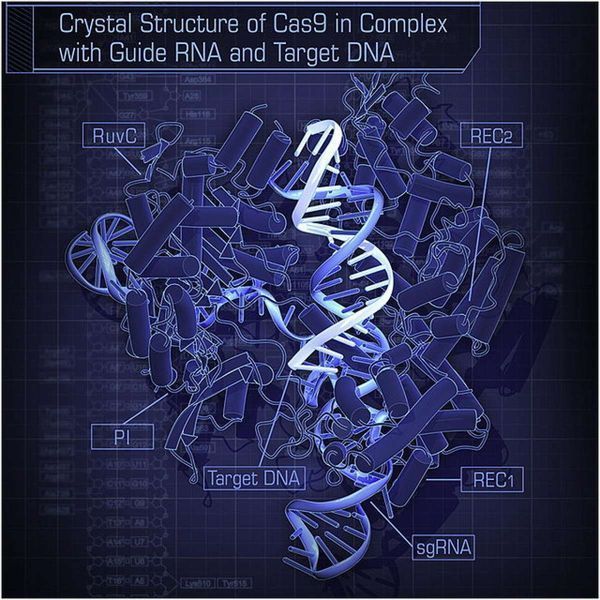Archive for the ‘bioengineering’ category: Page 188
Jan 21, 2017
Human patient treated with CRISPR gene editing for the first time
Posted by Shailesh Prasad in categories: bioengineering, biotech/medical
Jan 20, 2017
The UN Okays Synthetic Biology
Posted by Karen Hurst in categories: bioengineering, biological, ethics, existential risks, genetics
That’s a relief.
Of all the potentially apocalyptic technologies scientists have come up with in recent years, the gene drive is easily one of the most terrifying. A gene drive is a tool that allows scientists to use genetic engineering to override natural selection during reproduction. In theory, scientists could use it to alter the genetic makeup of an entire species—or even wipe that species out. It’s not hard to imagine how a slip-up in the lab could lead to things going very, very wrong.
But like most great risks, the gene drive also offers incredible reward. Scientists are, for example, exploring how gene drive might be used to wipe out malaria and kill off Hawaii’s invasive species to save endangered native birds. Its perils may be horrifying, but its promise is limitless. And environmental groups have been campaigning hard to prevent that promise from ever being realized.
Jan 20, 2017
Scientists Have a Plan to Bring Back the Caspian Tiger, Which Has Been Extinct for 50 Years
Posted by Shailesh Prasad in categories: bioengineering, genetics
Caspian tigers were some of the largest cats ever to roam the Earth, but they went extinct in the 1960s. Now, some scientists want to bring them back.
A new study, published in the journal Biological Conservation, lays out the plan to reintroduce the tigers using a subspecies, the Siberian tiger, which is genetically similar to the Caspian tiger.
The authors write in their paper that the Siberians tiger’s “phenotype proves adaptable to the arid conditions of the introduction site”.
Jan 19, 2017
Equipping Insects for Special Service
Posted by Klaus Baldauf in categories: bioengineering, biotech/medical, drones
Draper combines navigation and neuromodulation to guide insects
CAMBRIDGE, MA – The smallest aerial drones mimic insects in many ways, but none can match the efficiency and maneuverability of the dragonfly. Now, engineers at Draper are creating a new kind of hybrid drone by combining miniaturized navigation, synthetic biology and neurotechnology to guide dragonfly insects. The system looks like a backpack for a dragonfly.
DragonflEye, an internal research and development project at Draper, is already showing promise as a way to guide the flightpath of dragonflies. Potential applications of the technologies underpinning DragonflEye include guided pollination, payload delivery, reconnaissance and even precision medicine and diagnostics.
Jan 19, 2017
Will synthetic biology help us to eliminate age-related diseases?
Posted by Steve Hill in categories: bioengineering, biotech/medical, chemistry, computing, genetics, health, life extension
A quick look at synthetic biology and its potential for health and treating age-related diseases.
All living organisms contain an instruction set that determines what they look like and what they do. These instructions are encoded in the organism’s DNA within every cell, this is an organism’s genetic code (or “genome”).
Mankind has been altering the genetic code of plants and animals for thousands of years, by selectively breeding individuals with desired features. Over time we have become experts at viewing and manipulating this code, and we can now take genetic information associated with the desired features from one organism, and add it into another one. This is the basis of genetic engineering, which has allowed us to speed up the process of developing new breeds of plants and animals.
Continue reading “Will synthetic biology help us to eliminate age-related diseases?” »
Jan 19, 2017
Manufacturing could be revolutionized by synthetic biology
Posted by Karen Hurst in categories: bioengineering, biotech/medical, computing
The emerging discipline of synthetic biology sits at the crux of the intersection between design, biology, computing and manufacturing…[I]t appears more and more probable that we are on the cusp of a paradigm shift, where…biology is adopted as the next big manufacturing technology.
[The objective of Ginkgo Bioworks, an “organism design” company,] is to take synthetic biology techniques to an industrial level, machine-injecting DNA sequences into baker’s yeast creating “living organism” products like perfumes, sweeteners, cosmetics and other things that are typically extracted from plants.
There are two main potential benefits from the technology. Replacing consumption of finite natural resources with lab-grown alternatives, and the potential to replicate actual genes to produce authentic fragrances replacing chemical synthetic scented products that currently dominate the marketplace.
Continue reading “Manufacturing could be revolutionized by synthetic biology” »
Jan 19, 2017
ExxonMobil extends algae biofuels research using synthetic biology technologies
Posted by Karen Hurst in categories: bioengineering, biological, genetics, sustainability, transportation
After making significant progress in understanding algae genetics, growth characteristics and increasing oil production, Synthetic Genomics, Inc. and ExxonMobil said they would extended their joint research agreement into advanced algae biofuels.
The two companies have been researching and developing oil from algae for use as a renewable, lower-emission alternative to traditional transportation fuels since 2009. They are seeking to develop strains of algae that demonstrate significantly improved photosynthetic efficiency and oil production through selection and genetic engineering of higher-performance algae strains.
Jan 17, 2017
Epigenetics Drives Pancreatic Cancer Metastasis, Potentially Reversible
Posted by Karen Hurst in categories: bioengineering, biotech/medical, genetics
Jan 17, 2017
Twist Bioscience Supplying 3.2kB Genes to Ginkgo Bioworks
Posted by Klaus Baldauf in categories: bioengineering, biotech/medical
— longer synthetic DNA accelerates customer discoveries —
SAN FRANCISCO, Calif. – January 10, 2017 – Twist Bioscience, a company accelerating science and innovation through rapid, high-quality DNA synthesis on silicon, today announced that it is now shipping genes up to 3,200 base pairs (3.2 kilobase or kB) in length to Ginkgo Bioworks under their existing supply agreement.
“Twist Bioscience continues to deliver record volumes of the highest-quality DNA to advance our organism engineering efforts, meeting or exceeding our aggressive timelines,” said Jason Kelly, CEO and co-founder of Ginkgo Bioworks. “With the availability of synthetic genes up to 3.2kB from Twist, we are able to expedite the rapid prototyping of organism designs to generate cosmetics, nutritional ingredients, flavors, fragrances and other important ingredients.”
Continue reading “Twist Bioscience Supplying 3.2kB Genes to Ginkgo Bioworks” »

















